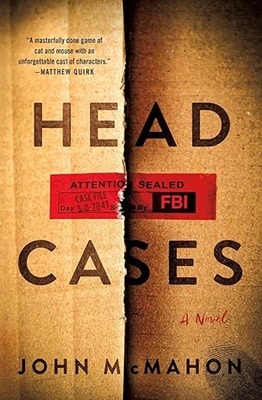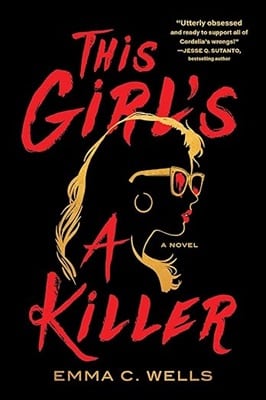Book Review
The Blue Monsoon
reviewed by Barbara Saffer
This book is the sequel to ‘The Blue Bar’ but can be read as a standalone.
During monsoon season, Mumbai’s torrential downpours, flooded streets, and swamped rail tracks clog parts of the city to a standstill. This makes the job of the police even harder, and Senior Inspector Arnav Singh Rajput must navigate flash floods and slosh through waterlogged streets while investigating a heinous murder.
Rajput is called to the scene when a body is found in a Hindu temple dedicated to the goddess Ma Kaali. The murder victim is unrecognizable, with his face flayed by vicious slashes; the nose and ears sliced away; the eyes gouged out; and the genitals cut off. The body also has a tantric symbol, representing the vagina, drawn on his chest. To add to the desecration, gold jewelry – offered to the goddess by prosperous devotees – is missing from the temple safe.
Rajput’s investigative team includes Inspector Jivan Desai – a high-caste man who resents Rajput’s rapid rise in the police department; and Sub-inspector Sita Naik – a low-caste woman who has a secret crush on her boss. Caste differences cause severe discrimination in Indian society, though Rajput – who’s high-caste himself – wrongly thinks all that bigotry is a thing of the past. Thus Rajput is taken aback when snobby Desai tries to manipulate evidence to protect his high-caste peers while scapegoating low-caste individuals.
As Rajput’s team investigates the homicide in the temple, video footage of the crime scene is released on the website of social media influencer, activist, and former Bollywood actress Chitra Varli. Chitra insists she was hacked, but Rajput isn’t convinced. The crime scene video, along with other clues, lead the police to look at a variety of suspects, including Chitra Varli; the priest at the Ma Kaali temple; a tantric practitioner; a thug who works for a Mumbai mafia don; the owner of a hair factory; and political activists trying to get low-caste candidates elected to government positions.
Additional murders raise the stakes, and Rajput’s superior, Assistant Police Commissioner Atul Bapat, puts pressure on Rajput to arrest the culprit. This is made more difficult by the fact that some police are corrupt; there’s a mole in the police department; and someone is sending threatening texts in an attempt to derail the police inquiries.
Rajput also has a lot going on in his personal life. His beautiful, wheelchair-bound wife Tara – who was paralyzed by a bullet – is far along in a risky pregnancy. Despite her challenges, Tara wants to volunteer for a nonprofit that helps young girls. Rajput, however, wants Tara to stay home and be safe. Rajput is also concerned about his teenage daughter Pia, who suffers from PTSD because she was once abducted and terrorized. Rajput asks a family friend called Vaeeni – who’s been living in a slum since her deceased husband was exposed as a corrupt cop – to move into his house to help Tara and Pia, but Vaeeni is too proud to accept the offer.
The murder investigation is difficult and complex, and the lives of some police officers and civilians are put in serious jeopardy.
The book contains an interesting array of ancillary characters, including police informers; kinnar (biological men who identify as women) that bless weddings and births; a physiotherapist who’s helping Tara regain mobility; a doctor who’s monitoring Tara’s pregnancy; a controversial political leader; and more.
The novel has a list of characters at the front, and at the back, a glossary of terms, and notes about The Blue Monsoon. The glossary is useful for understanding Indian words and phrases, such as chawl – a large tenement house; hafta – protection money paid to corrupt police; and laddoo – a nutritious snack for pregnant women. The notes, in turn, provide short primers about the Indian caste system, tantric practices, and kinnar or hijra (eunuchs and transgendered or intersex individuals), all of which are important to the story. I would encourage readers to peruse all these sections.
Mumbai during monsoon season provides a fine backdrop to this well-written thriller. I look forward to more books in the ‘Blue Mumbai Thriller’ series.
Thanks to Netgalley, Damyanti Biswas, and Thomas & Mercer for a copy of the book.
More Serial Killers
advertisement
Serial Killer Features
For the Love of Serial Killers
Where does our obsession with serial killers come from?
Two Psychopaths in Fiction
A Comparison of Hannibal Lecter and Anton Chigurh
Serial Killers
The three classifications of serial killer










